In the field of ecology, studying the complex interactions of food webs provides valuable insights into the workings of ecosystems. Whether it’s the tiny creatures interacting in the soil or the far-reaching impacts on land and water systems, the connections between organisms create a rich tapestry of life to be explored.
By delving into the details of how organisms feed on each other, transfer energy, and the crucial role of key species, we uncover a world of interdependence that shapes the diversity and strength of ecosystems. This journey of discovery leads us to the intricate relationships that hold together the diverse ecological environments.
For instance, consider a simple food chain in a forest: sunlight is captured by plants, which are then eaten by insects, which in turn become food for birds. Each step in this chain illustrates the flow of energy and nutrients within the ecosystem. This interconnectedness is vital for the health and stability of the environment, showcasing how every species plays a unique role in maintaining balance.
As we navigate the complexities of food webs, we unveil a world where every organism has a part to play, emphasizing the delicate balance that sustains life on Earth. In particular, as gardeners or farmers we’re most interested in the soil food web and the importance it has on the fertility of soils to grow healthy crops.
Soil Food Webs
- Soil food webs are intricate systems essential for ecosystem well-being and soil richness. For example, in a soil food web, bacteria, fungi, nematodes, and earthworms interact to break down organic matter and recycle nutrients.
- The balance between top-down and bottom-up controls affects the availability of resources and relationships among different trophic levels. For instance, predators at the top of the food chain can regulate the population of herbivores, impacting plant growth.
- Symbiotic partnerships and the activities of ecosystem engineers are key factors shaping the dynamics of soil food webs. A specific example includes mycorrhizal fungi forming mutualistic relationships with plant roots to enhance nutrient uptake.
- Future scientific investigations should concentrate on examining the stability, evolutionary patterns, and intricate connections present within soil food webs. One possible focus could be studying how changes in climate affect the interactions between soil organisms and their environment.
Soil Food Web Dynamics

In the complex world of soil ecosystems, the interactions within the soil food web are essential for sustaining life underground. Microbes are key players in cycling nutrients, which help maintain soil fertility and support plant growth. This can be seen when bacteria break down organic matter, releasing nutrients that plants need to thrive.
Furthermore, the balance of predator and prey in the soil food web is crucial for ecosystem stability. For instance, when predatory organisms like nematodes (roundworms) control the population of herbivores such as insects, it prevents damage to plants and allows for a diverse range of plant species to flourish.
By grasping these relationships, we can effectively manage soil health and productivity. Soil food webs are intricate systems where each organism has a vital role in preserving the functions of the ecosystem.
Trophic Levels and Energy Transfer

In ecosystems, the relationships within soil food webs go beyond just interactions between microbes. They involve a complex interplay of trophic levels and energy transfer that are vital for the movement of nutrients and the balance of the ecosystem.
Key Components to Consider:
- Energy Movement: As organisms consume each other, energy is passed between different trophic levels. However, only a fraction of this energy is actually transferred due to metabolic processes. For example, a grasshopper eats grass, transferring energy from the producer level to the primary consumer level.
- Trophic Organization: The way organisms are structured into trophic levels, such as producers, primary consumers, and secondary consumers, influences how energy flows through the ecosystem and how nutrients are cycled. For instance, in a forest ecosystem, trees are producers, deer are primary consumers, and wolves are secondary consumers.
- Transfer Efficiency: The efficiency of energy transfer between trophic levels is crucial for maintaining the stability of an ecosystem. Top predators, like lions in a savannah ecosystem, play a key role in controlling the populations of lower trophic levels, ensuring a balanced food chain.
Understanding Ecosystem Interactions

When exploring ecosystems, it is essential to grasp the complex relationships between different organisms and how they impact the ecosystem’s balance. The network complexity in a food web, for example, shows the intricate connections between species.
For instance, in a forest ecosystem, the relationship between trees and fungi exemplifies this complexity. Fungi help trees absorb nutrients from the soil, while trees provide the fungi with sugars created through photosynthesis.
Moreover, interaction dynamics highlight how species engage with each other, whether through predation, competition, or mutualism.
For instance, in a grassland ecosystem, lions preying on zebras demonstrate predation, influencing the zebra population size. Understanding these dynamics is crucial as it allows us to predict how changes in one species can have ripple effects throughout the entire ecosystem.
Observing Soil Food Webs Challenges
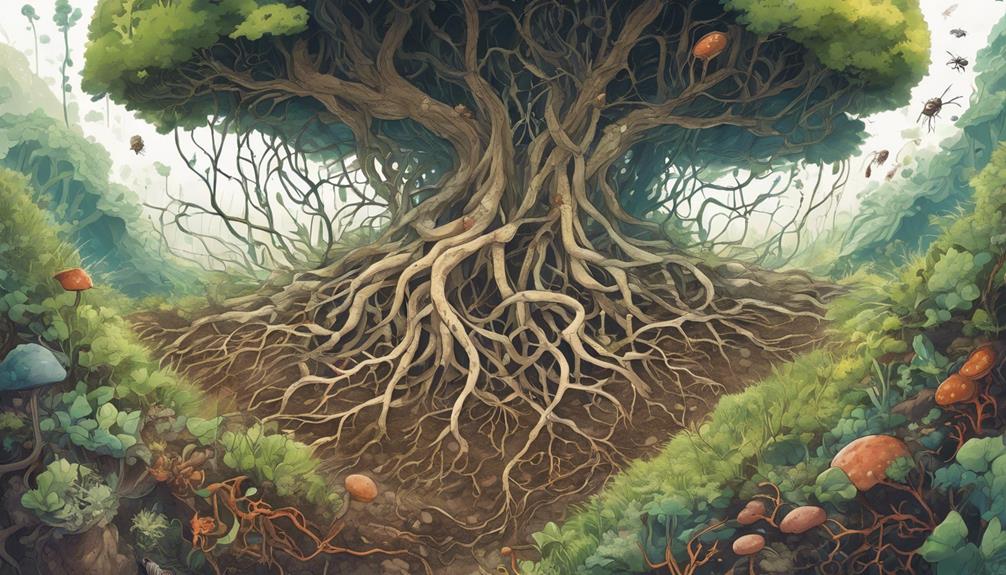
Exploring the intricate world of soil food webs presents numerous challenges that push researchers to think outside the box and rely on thorough scientific investigation. To truly grasp the complexities of soil ecosystems, scientists face hurdles that demand innovative approaches:
- Characterizing Microbial Communities: To comprehend the vast array of microbial populations residing in soil, researchers must employ sophisticated methods for pinpointing and analyzing these tiny organisms. For example, using DNA sequencing techniques can reveal the diversity of bacteria and fungi present in the soil.
- Refining Extraction Techniques: The process of extracting soil organisms for closer examination requires precise methods to prevent disrupting the delicate balance of the community. For instance, researchers may use non-invasive sampling techniques like soil cores to collect diverse samples without disturbing the soil structure.
- Deciphering Energy Flow and Trophic Levels: Mapping the flow of energy and identifying different trophic levels within soil food webs can be challenging due to the covert nature of these interactions. For example, using stable isotope analysis can help trace the transfer of energy between different organisms in the soil ecosystem.
By addressing these key components with creativity and scientific rigor, researchers can overcome the challenges of observing soil food webs and gain deeper insights into the hidden world beneath our feet.
Bottom-up Effects on Food Webs

To understand how resources impact food webs, we need to look at how the availability of resources and the number of consumers in an ecosystem interact. Think of resources like sunlight and nutrients as the building blocks of a food web. For example, in a grassland ecosystem, the amount of sunlight and nutrients available will affect how much grass can grow, which will then determine how many herbivores like rabbits can survive in that environment.
When there are changes in the availability of resources, it can set off a chain reaction known as a trophic cascade. Imagine a scenario where there is suddenly less sunlight reaching the grass in our grassland ecosystem. This could result in less grass being available for the rabbits to eat, leading to a decrease in the rabbit population. As a result, predators like foxes that rely on rabbits as a food source may also be affected due to the reduced rabbit population.
This domino effect shows how interconnected food webs are. Small changes at the bottom of the food chain can have significant impacts on higher levels. So, the next time you see a rabbit hopping around a grassland, remember that its existence is not just dependent on the grass it eats but also on the availability of sunlight that helps the grass grow.
Utilizing Biological Control in Agriculture
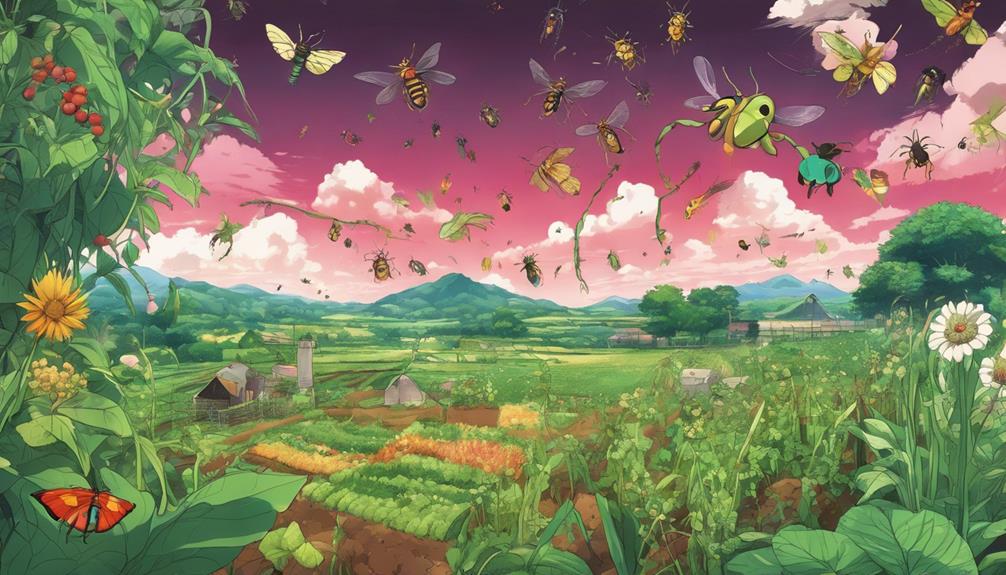
Utilizing biological control in agriculture involves tapping into natural processes to combat pests and boost crop yields. Here are a but a few examples:
Pest Control Without Chemicals: Instead of relying on harmful pesticides, farmers can employ natural predators like ladybugs or parasitic wasps to keep pest populations in check. This eco-friendly approach promotes sustainable farming methods that are gentle on the environment.
Example: For instance, releasing ladybugs into apple orchards can help control aphid populations without the need for chemical sprays.
Introducing Beneficial Insects: By introducing specific beneficial insects into agricultural fields, such as ladybugs or parasitic wasps, farmers can target particular pests while maintaining a harmonious ecosystem.
Example: Parasitic wasps can be introduced to combat caterpillar infestations in cornfields, reducing the damage to crops naturally.
Effective Crop Protection: Allowing natural predators to regulate pest populations can bolster crop protection measures, safeguarding harvests without the ecological repercussions of synthetic pesticides.
Example: Allowing spiders to thrive in rice fields can help control insect pests, reducing the need for chemical interventions.
By incorporating biological control methods, farmers not only manage pests effectively but also bolster the overall health and sustainability of agricultural systems, paving the way for a more environmentally friendly approach to food production.
Analyzing Soil Food Web Community Matrix Models
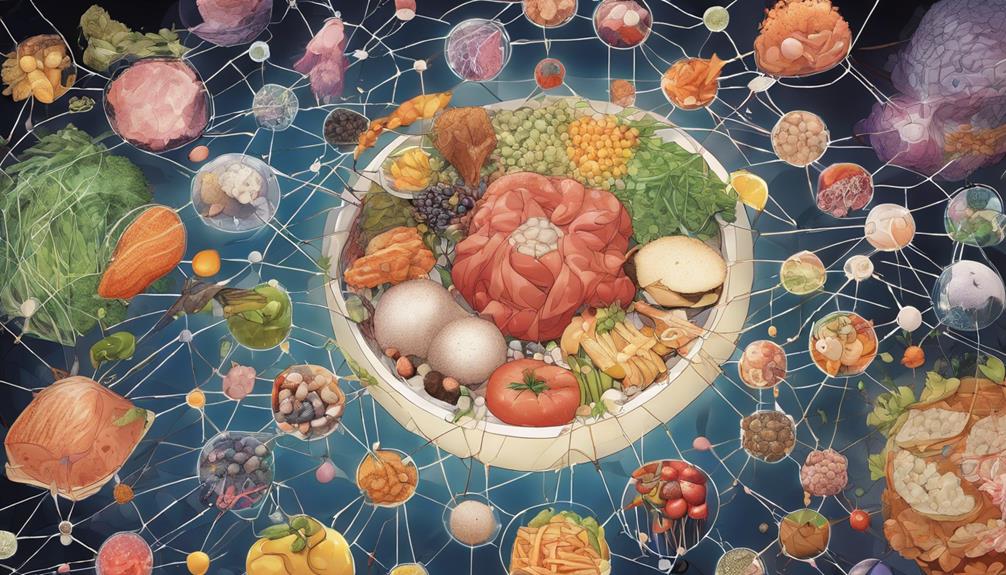
Understanding food webs involves studying Community Matrix Models, which provide a detailed way to explore the complex interactions and dynamics in ecological systems. These models use equations to map out interaction webs, enabling scientists to determine the strength of interactions and assess the stability of food webs.
When researchers focus on analyzing interaction strengths, they can uncover the significance of different species in a web and how they impact each other. Assessing stability is crucial as it reveals the ecosystem’s ability to withstand disturbances.
The equations that define these webs and interaction strengths serve as the basis for predicting how changes in one species can propagate throughout the entire system. This demonstrates the interconnected nature and delicate equilibrium that define ecological communities.
For example, by using Community Matrix Models, scientists can predict the impact of a decline in a predator species on the entire food web, showcasing the intricate connections and balance present in ecological systems.
Mathematical Modeling of Food Webs

Understanding the complex relationships within ecosystems is crucial for ecological scientists. One way they do this is through mathematical modeling, which provides a structured approach to studying food webs. This method allows researchers to predict how ecosystems will react to changes and disturbances.
Key Elements of Mathematical Modeling in Food Webs:
- Quantifying Stability: By using mathematical models, scientists can measure the stability of food webs. This allows them to make predictions about how these ecosystems will handle disruptions or changes. For example, they can determine how a decrease in a prey species might affect the predator population.
- Unraveling Network Complexity: Mathematical modeling helps untangle the intricate connections and complexities present in food webs. This sheds light on how energy flows between different species. For instance, researchers can analyze how changes in one species impact the entire ecosystem.
- Analyzing Interaction Strengths: Mathematical models also assist in evaluating the strength of interactions between species. This provides valuable information about which species are crucial to the stability of the food web. For example, understanding how a predator-prey relationship influences the overall balance in the ecosystem.
Mutualistic Relationships in Food Webs
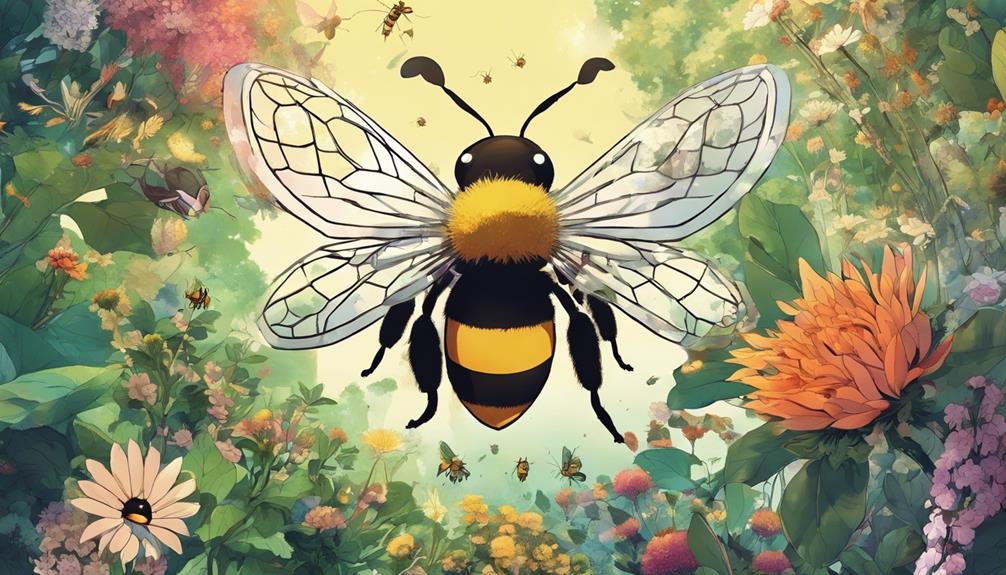
When we delve into the complex connections found in food webs, it becomes clear that mutualistic relationships play a vital role in shaping the balance and resilience of ecological systems. These relationships are built on partnerships where different species work together for mutual benefit, creating a harmonious network of interdependence.
In these symbiotic partnerships, each species contributes something valuable to the other, fostering a relationship where both parties gain. Take, for example, the way bees pollinate flowers, aiding in the reproduction of plants while receiving nectar in return. Additionally, consider how certain plants provide a safe haven and sustenance for ants, who in turn protect the plants from predators.
By grasping the significance of these mutualistic bonds, we gain a deeper understanding of how species rely on each other within food webs. This interconnectedness highlights the delicate balance that sustains ecosystems and underscores the importance of preserving these relationships for the overall health of our environment.
Earthworms as Ecosystem Engineers
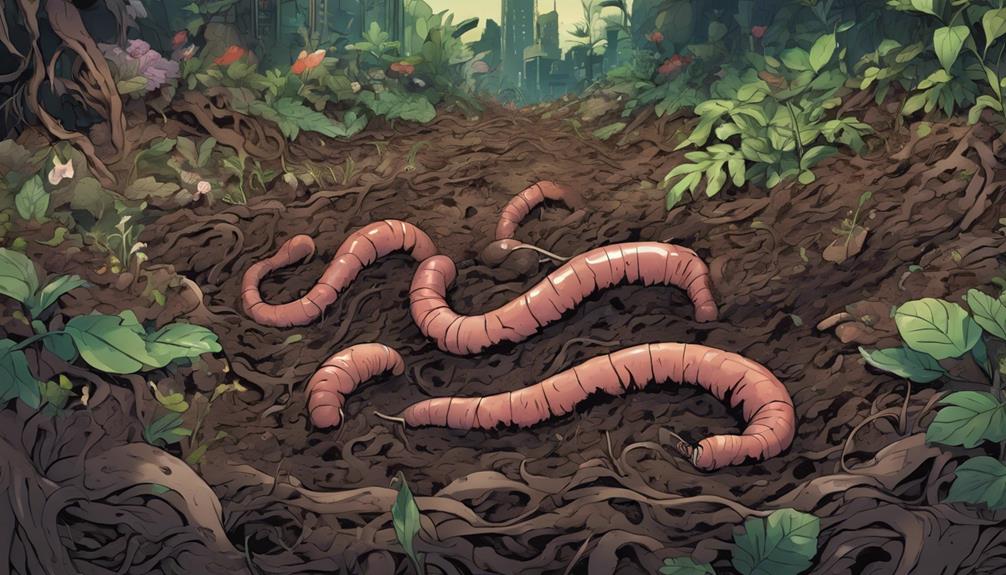
In nature’s intricate web of relationships, mutualistic interactions reveal the delicate balance among species. Symbiotic partnerships illuminate the importance of connections in driving ecosystem dynamics. Among these essential players are earthworms, known for their role as ecosystem engineers in transforming soil ecosystems.
- Earthworms as Soil Architects: Picture the earthworms tunneling deep into the soil, creating pathways that allow air to circulate and water to drain efficiently.
- Fertile Soil Secrets: Think of the earthworms’ waste, called worm castings, as a natural fertilizer that boosts soil fertility. These castings contain nutrients that nourish plants and support a thriving ecosystem.
- Building a Better Environment: Imagine earthworms breaking down leaves and other organic matter, kickstarting the decomposition process. As they work tirelessly underground, they improve soil structure, creating a healthier environment for plants to grow.
These activities underscore the vital role that earthworms play in cultivating soil health and sustaining the intricate balance of ecosystems.
Key Role of Soil Food Webs

Soil food webs are like underground cities bustling with life, from tiny microbes to bustling insects, all working together to keep the ecosystem running smoothly.
Imagine a busy marketplace where vendors sell nutrients instead of goods. In this hidden world, the organisms break down dead leaves and other organic matter, turning them into valuable nutrients that plants need to grow big and strong.
But soil food webs do more than just recycle nutrients. They also act as nature’s pest control team, keeping populations of harmful bugs and diseases in check. Just like how a healthy body fights off sickness, a diverse soil community helps keep the ecosystem in balance and thriving.
The complex relationships within soil food webs show us how every living thing in an ecosystem is connected. It’s like a giant puzzle where each piece relies on the others to stay in place. By protecting and nurturing soil biodiversity, we can ensure that the ecosystem runs smoothly, with nutrients cycling efficiently and the environment staying resilient against challenges.
Complex Interactions in Food Webs
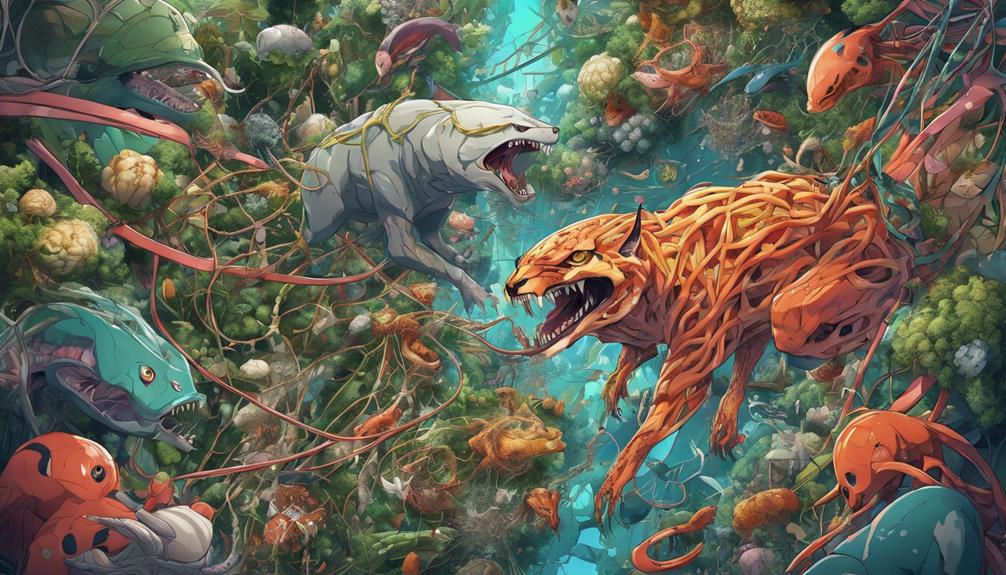
In ecosystems, complex interactions between different organisms shape the flow of energy and maintain stability. Here are some key components that illustrate the intricate relationships within these systems:
- Predator-Prey Relationships: Predators, like lions hunting zebras on the savanna, are essential for keeping prey populations in check. This delicate balance of hunting and avoiding predation affects the size and distribution of animal populations.
- Species Relationships: The interactions between species, such as competition for resources or mutually beneficial partnerships like bees and flowers, are vital for the functioning of ecosystems. These relationships determine how energy and nutrients move through the ecosystem.
- Cascade Effects: Changes in one part of the food chain can have cascading effects on other levels, much like how a decline in lion populations can impact the entire savanna ecosystem. This demonstrates the complex web of dependencies that exist within food webs.
Evolution of Food Webs
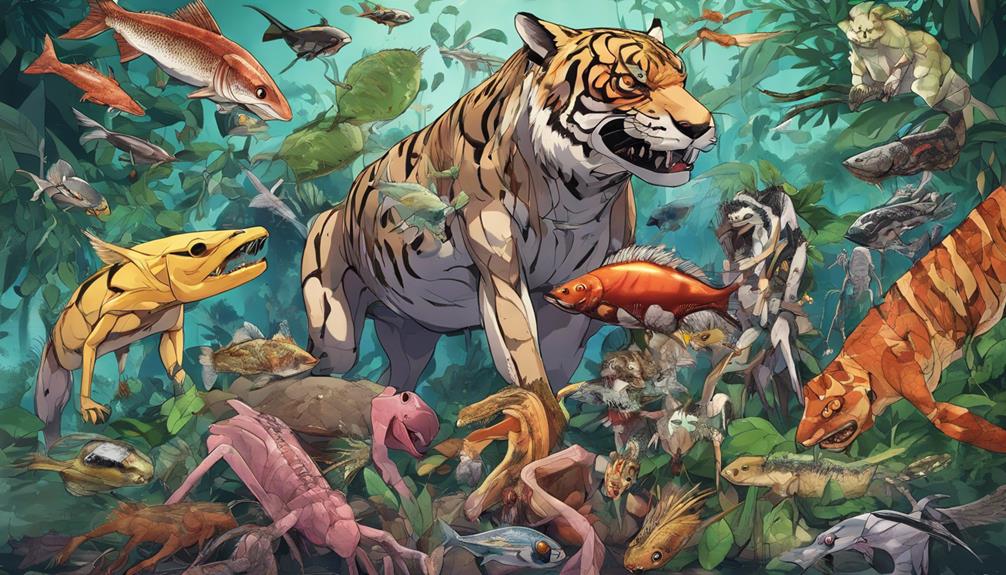
The intricate relationships found within food webs play a crucial role in shaping the ever-changing dynamics of ecosystems. These connections are essential for the flow of energy and interactions among different species. Over time, these interactions lead to the evolution of food webs, showcasing how species adapt to various environmental conditions.
For example, in a forest ecosystem, we can observe how plants, herbivores, and predators interact to form a complex web of relationships. The plants evolve mechanisms to defend themselves from herbivores, while the herbivores develop strategies to find food and avoid predators. This continuous adaptation and evolution contribute to the overall balance and stability of the ecosystem.
As species within food webs evolve, they develop traits that help them secure resources, evade predators, and thrive in competitive environments. This ongoing process leads to the creation of intricate networks of interdependence, where each species plays a unique role in maintaining the ecosystem.
By studying these adaptive strategies and evolutionary trends, scientists can gain valuable insights into how ecosystems respond to challenges posed by the environment. This knowledge helps us understand the resilience and stability of ecosystems, highlighting the importance of maintaining biodiversity and preserving the delicate balance of nature.
Impact on Ecosystem Dynamics
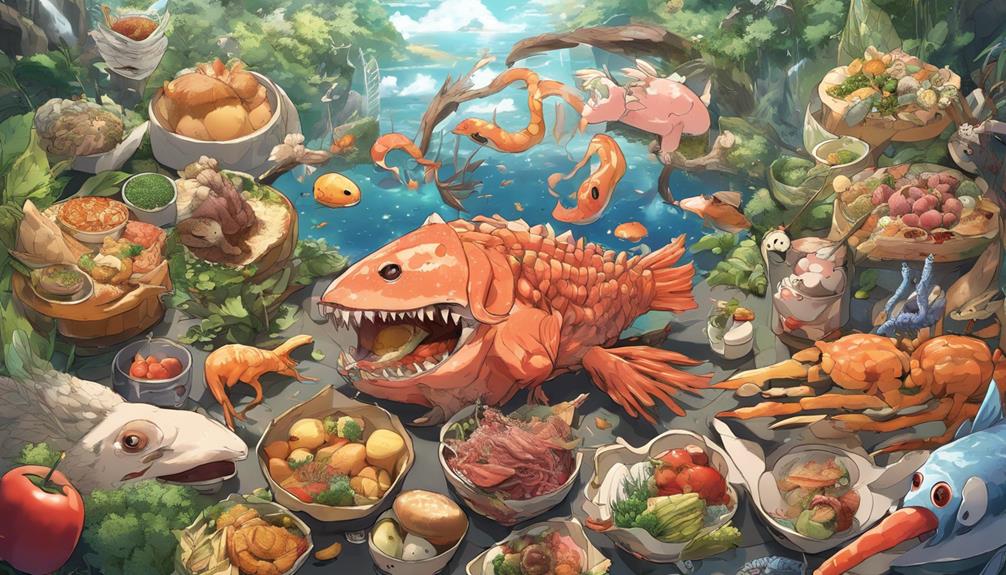
Food webs are a crucial component of ecosystems, influencing the complex interactions and energy flow within natural systems.
Key Impacts of Food Webs on Ecosystem Dynamics:
- Enhancing Ecosystem Resilience: Food webs help ecosystems withstand environmental challenges like climate change by supporting a wide range of species. For example, in a forest ecosystem, a food web that includes plants, insects, birds, and mammals can better adapt to changes in temperature or precipitation.
- Supporting Biodiversity Conservation: By maintaining a balance between different species and their populations, food webs aid in conserving biodiversity. For instance, a marine food web that includes phytoplankton, zooplankton, fish, and predators helps preserve the variety of marine life forms in an ocean ecosystem.
- Providing Ecosystem Services: Food webs offer vital services to ecosystems, such as recycling nutrients, facilitating plant pollination, and controlling pest populations. For instance, in an agricultural ecosystem, a food web that includes plants, insects, birds, and microbes helps maintain soil health and crop productivity by controlling pests and ensuring nutrient cycling.
The Soil Food Web for Gardeners and Farmers
The soil food web is a crucial component of healthy soil that directly impacts the success of home gardeners and farmers. This intricate network consists of various organisms such as bacteria, fungi, nematodes, earthworms, and other microorganisms that interact with each other and with plant roots in the soil.
One key component of the soil food web is the presence of decomposers like bacteria and fungi. These organisms break down organic matter such as dead plants and animal remains, releasing nutrients like nitrogen, phosphorus, and potassium back into the soil. This nutrient recycling process is essential for maintaining soil fertility and providing plants with the essential elements they need to grow and thrive.
For example, earthworms are important members of the soil food web as they help to break down organic matter and improve soil structure through their burrowing activities. Their castings (worm poop) are rich in nutrients and help to create a fertile environment for plant growth.
Another important component of the soil food web is mycorrhizal fungi, which form symbiotic relationships with plant roots. These fungi help plants uptake nutrients like phosphorus and water from the soil, enhancing the plant’s growth and overall health. In return, the plants provide the fungi with sugars produced through photosynthesis.
For home gardeners and farmers, understanding and supporting the soil food web can have numerous benefits. By promoting a diverse microbial community in the soil through practices like adding compost, using cover crops, and minimizing tillage, gardeners and farmers can improve soil structure, increase nutrient availability, and enhance plant resilience to pests and diseases. This leads to healthier plants, higher yields, and reduced reliance on synthetic fertilizers and pesticides.
The soil food web plays a vital role in supporting plant growth and soil health for home gardeners and farmers. By fostering a thriving soil ecosystem that includes a variety of beneficial organisms, individuals can create sustainable and productive gardens and farms that benefit both the environment and the food they produce.
Improving Your Soil Food Web
Home gardeners and farmers can implement various methods to enhance the health of their soil food web, which is crucial for promoting plant growth and overall garden productivity. Here are ten effective strategies to consider:
- Composting: Composting kitchen scraps, yard waste, and other organic materials can introduce beneficial microorganisms into the soil, enriching the food web. For example, adding compost tea to the soil can boost microbial activity.
- Mulching: Applying organic mulch such as straw, leaves, or grass clippings helps retain moisture, suppress weeds, and provide habitat for soil organisms like earthworms, which contribute to soil aeration.
- Crop Rotation: Rotating crops seasonally can prevent the buildup of pests and diseases in the soil, promoting a diverse range of beneficial organisms that support plant health.
- Cover Cropping: Planting cover crops like clover or vetch (part of the legume family) can add nitrogen to the soil, improve soil structure, and attract beneficial insects that contribute to the soil food web.
- No-till Farming: By avoiding tilling the soil, home gardeners & farmers can preserve soil structure and minimize disturbance to soil organisms, allowing the food web to thrive.
- Using Organic Fertilizers: Organic fertilizers like compost, manure, and bone meal provide essential nutrients to plants while feeding the soil microbes that form the foundation of the soil food web.
- Incorporating Biochar: Adding biochar to the soil can enhance soil fertility, increase water retention, and create a habitat for beneficial microbes, promoting a healthy soil ecosystem.
- Integrating Companion Planting: Planting complementary crops together can enhance soil biodiversity, attract beneficial insects, and improve nutrient uptake, benefiting the soil food web.
- Encouraging Mycorrhizal Relationships: Mycorrhizal fungi form symbiotic relationships with plant roots, aiding in nutrient uptake and promoting soil aggregation, making it easier for other soil organisms to thrive.
- Minimizing Chemical Inputs: Limiting the use of synthetic pesticides and herbicides can help preserve the delicate balance of the soil food web by avoiding harm to beneficial soil organisms.
By implementing these strategies, home gardeners and farmers can create a thriving soil food web that supports healthy plant growth, reduces the need for chemical inputs, and promotes a sustainable gardening environment.
Conclusion
Studying food webs uncovers the intricate connections between different organisms that influence how ecosystems function. For example, in a simple food web involving grass, rabbits, and foxes, we see how each organism relies on the others for survival.
Exploring the interactions within food webs, such as how energy moves through different trophic levels or how soil organisms contribute to nutrient cycling, helps us appreciate the delicate balance between the effects of organisms at different levels of the food chain.
Recognizing the role of food webs in shaping biodiversity and maintaining ecosystem stability is essential for scientists to better understand how ecological systems work. By studying food webs, researchers can unlock the secrets of nature’s interconnectedness and pave the way for future discoveries in ecology.
